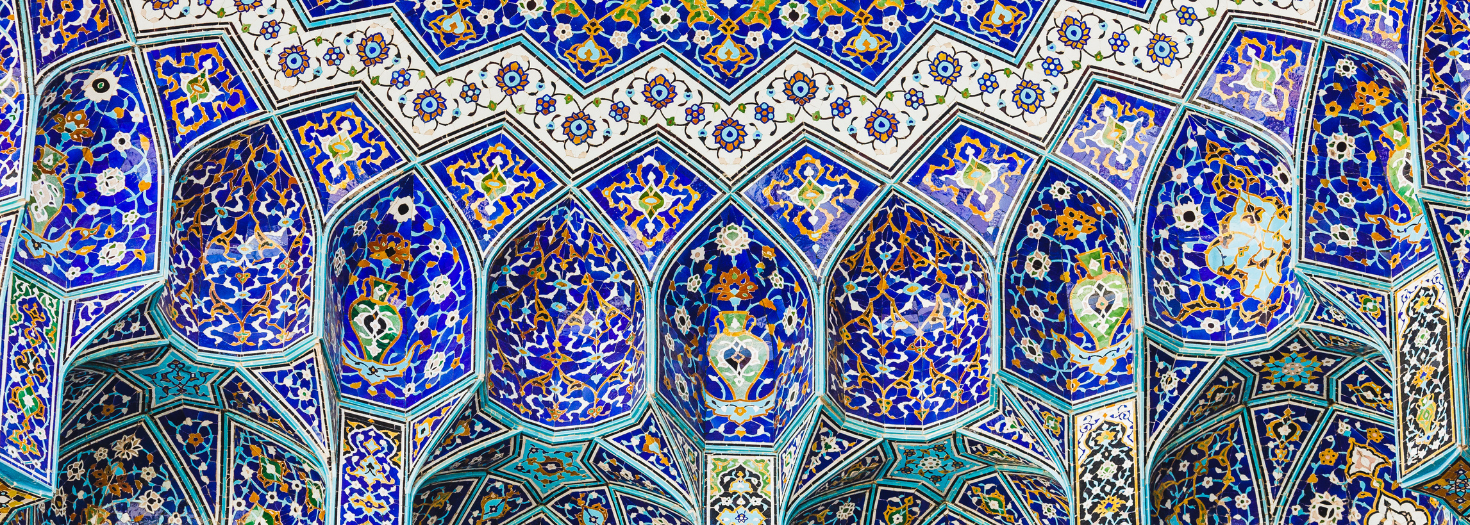A Journey Through Islamic Architecture
There's magic in Islamic architecture. It is not just about buildings or bricks, but about spaces that tell stories – of devotion, power, culture, and artistry. These structures encourage us to explore beyond the surface and enter a world where faith and creativity intertwine, where every arch and tile pulses with history and meaning.
As travellers, delving into these architectural masterpieces is a way to understand a culture not just through words, but through form, light, and silence. To experience the sacred rhythm of a faith that has inspired some of the most breathtaking art and design on the planet.
From Istanbul’s iconic mosques to the serene courtyards of Oman and the modernity of Malaysia’s spiritual landmarks, we’ll discover how the past lives vibrantly in the present.

Istanbul: The City of Minarets and Mosaics
Istanbul’s skyline is a silhouette of minarets, domes, and spires – a skyline that has fascinated poets, painters, and travellers for centuries. And it’s here, where Europe meets Asia, that Islamic architecture finds one of its most glorious expressions.
The Blue Mosque, or Sultan Ahmed Mosque, is practically a symphony in stone and tile. Approaching it, the air seems to thicken with the scent of jasmine and cardamom from nearby bazaars. The mosque’s six minarets reach skyward like fingers pointing toward the heavens, an apt symbol as the call to prayer ripples across the city. Step inside and the interior dazzles – over 20,000 hand-painted Iznik tiles that create a sea of blues and greens and catch the soft light that filters in through stained glass windows. Every detail, from the intricate arabesques to the sweeping calligraphy, is an ode to divine beauty.
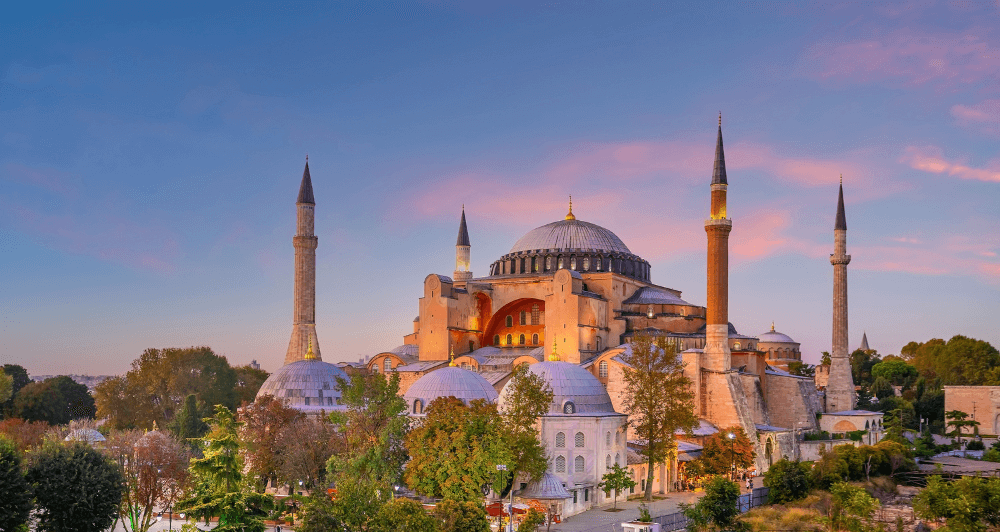
Not far away, the Hagia Sophia is representative of Istanbul’s layered history. Once a Byzantine cathedral, then an Ottoman mosque, and now a museum again, its vast dome seems to float effortlessly above visitors. The interplay of Christian mosaics and Islamic calligraphy is a visual metaphor for the city itself, a place where cultures and faiths converge.
Walking the cobblestone streets around Sultanahmet, you can feel the resonance of centuries-old prayers and the quiet devotion of pilgrims who have walked this way in the centuries before you. You’ll find that in Istanbul, faith isn’t confined to sacred spaces, but it practically spills into the rhythm of daily life.
Experience tip: A luxury cruise offers an incredible perspective of Istanbul’s architectural wonders. You’ll step into a city where the sacred and the secular exist in harmony.

Muscat, Oman: Desert Grace and Spiritual Serenity
Oman’s architectural heritage might not be as immediately striking as Istanbul’s sprawling mosques, but its beauty lies in its subtlety, its deep connection to landscape and tradition.
The Sultan Qaboos Grand Mosque in Muscat is a masterpiece of modern Islamic architecture and Omani craftsmanship. Its vast prayer hall can hold over 6,000 worshippers, and the grand chandelier - fashioned from Swarovski crystals - sparkles like a constellation in the space. But the mosque’s real wonder is its reflection of Omani identity: simple yet profound, rooted in faith yet reaching toward the future.
Surrounding the mosque are courtyards and gardens that reflect the desert’s quiet majesty. The use of light and shadow here is deliberate: bright sun rays descend through intricately carved mashrabiya screens, creating ever-shifting patterns that remind visitors of the desert sands and the play of light that cascades across dunes.
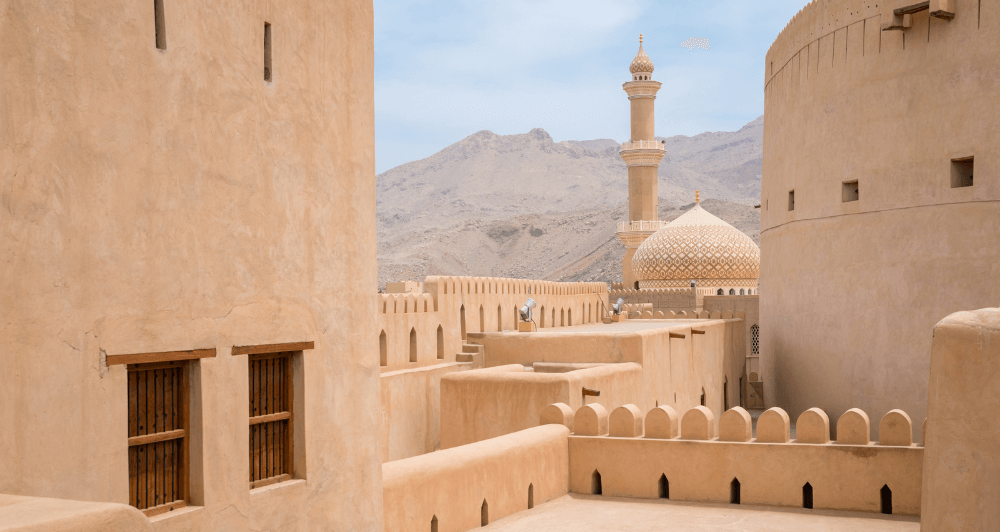
Beyond the mosque, Oman’s ancient forts, like Nizwa Fort, tell stories of a proud heritage that protected and nurtured its people for centuries. The rugged stone walls, narrow staircases, and watchtowers stand as reminders of a time when faith and defense were intertwined.
For travellers seeking a properly immersive experience, Oman is home to retreats like Six Senses Zighy Bay. A private villa bordering the gulf, the scent of spa oils in the air, evenings high on the mountain under a blanket of stars. It’s one of our favourite places to see architecture and the landscape come together – a perfect complement to the spirit of Eid.
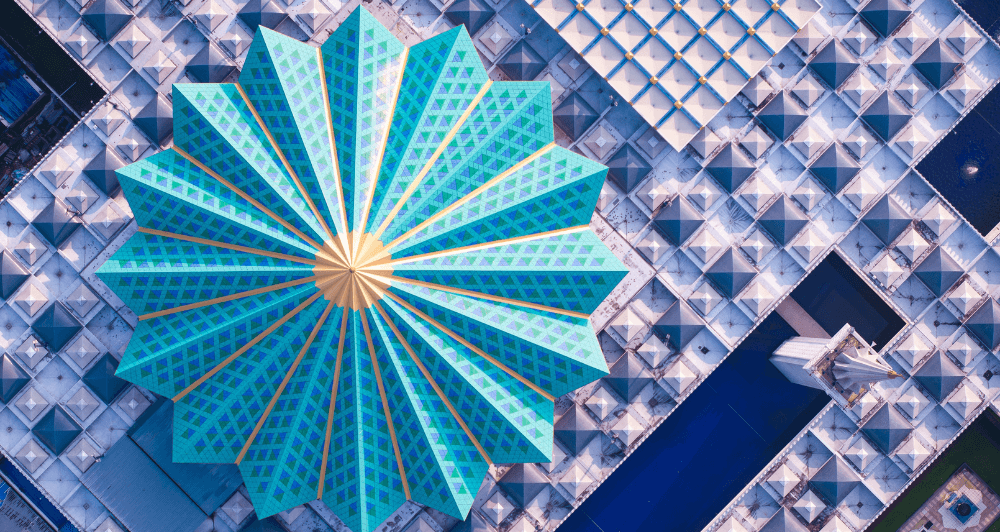
Kuala Lumpur, Malaysia: A Modern Tapestry of Faith
In the heart of Kuala Lumpur, the National Mosque (Masjid Negara) is a striking contrast to the historical mosques of the Middle East. Built in the 1960s, its design embraces contemporary design while also retaining a grip on Islamic symbolism. The mosque’s twenty-pointed star roof resembles a blooming lotus, a symbol of purity and peace, while the 73-metre-high minaret punctuates the city’s skyline like a beacon of faith.
The National Mosque is a place of worship, but it’s also a cultural hub that sees faith merge with community. The expansive gardens and reflective pools surrounding it create a sense of calm amidst the city’s bustle, and visitors often pause here to absorb the peaceful atmosphere. It’s a reminder that spirituality can flourish in the heart of a metropolis.
Not far away, the Islamic Arts Museum Malaysia showcases the rich artistic traditions of the Muslim world. Its collection of calligraphy, textiles, ceramics, and architectural models highlights the diversity and creativity of Islamic culture, from Andalusia to Aceh.
Malaysia’s mosques and cultural institutions demonstrate how faith adapts and thrives across different cultures and geographies, creating new living traditions. For those visiting post-Eid, places like Langkawi’s luxury resorts offer the chance to reflect, rejuvenate, and celebrate life’s beauty with loved ones.

The Language of Geometry and Light
One of the most captivating aspects of Islamic architecture is its use of geometry and light – both languages that transcend words and speak directly to something a little deeper.
Patterns of stars, flowers, and tessellations cover walls, ceilings, and floors in mesmerising repetitions that are reminiscent of infinity – intricate designs that are decoration but also offer a meditation on the infinite nature of the divine.
Light also plays a spiritual role. The way it filters through mashrabiya screens, coloured glass and latticed windows transforms interiors into spaces of wonder and contemplation. The changing daylight creates a dynamic dance of shadow and brightness, echoing the passage of time and the cycles of life.
Experiencing these elements in person - whether walking through a mosque’s prayer hall or resting in a courtyard garden - encourages a moment of mindfulness and connection.
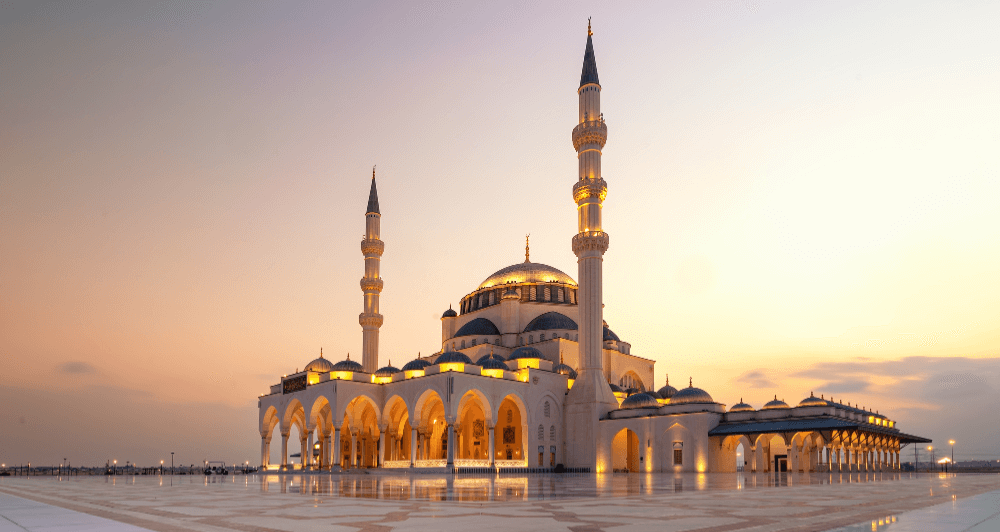
Travelling Through Architecture: Beyond Sightseeing
Luxury travel allows us to experience these architectural wonders as tourists, but also as participants in a broader cultural and spiritual dialogue.
Imagine hearing the call to prayer as Istanbul’s skyline glows at dusk, docked just offshore on your luxury cruise ship. Picture strolling through the quiet halls of a desert mosque in Oman, feeling the cool stone beneath your fingertips and the desert heat on your skin. Or exploring the city streets of Kuala Lumpur, contemplating the modern expressions of a faith that spans continents.
These moments of immersion make travel an act of true discovery – they allow us to understand different ways of life, to appreciate the artistry born of devotion, and to find your own quiet space within the beauty.
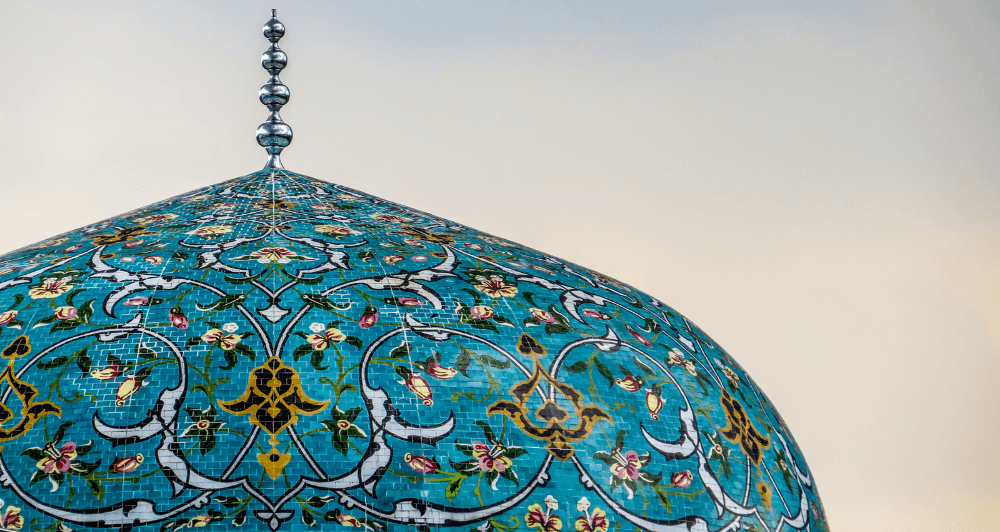
Where to stay and experience:
Istanbul: Choose a luxury cruise of the Mediterranean. You’ll often take in numerous ports of call in Turkey, as well as Greece, Croatia and Italy.
Oman: Retreat to Six Senses Zighy Bay for an authentic, luxury experience amid spectacular landscapes, with guided tours to the Sultan Qaboos Grand Mosque and desert forts.
Malaysia: Explore Kuala Lumpur’s National Mosque and Islamic Arts Museum, balanced by a stay in Langkawi’s luxury resorts for post-Eid rest and celebration.
